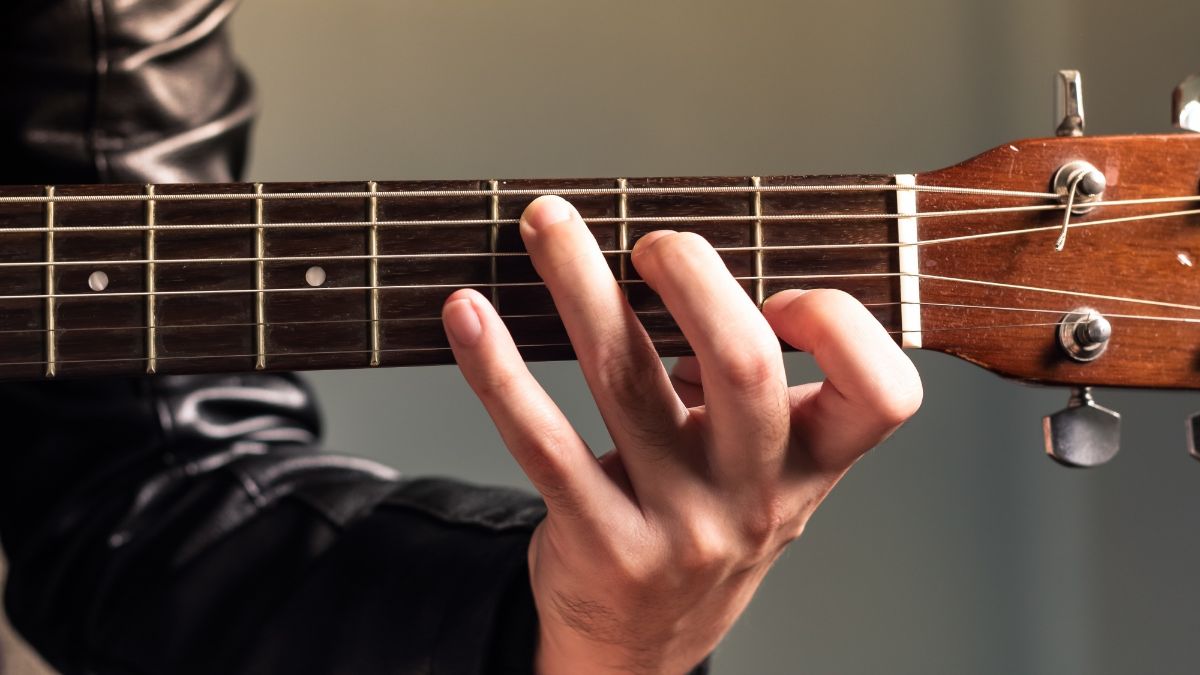
As one delves into the realm of music, it is impossible to overlook the strong yet melodious tone of a guitar. This string instrument, with its origins traced back over 4000 years ago, has evolved significantly and now comes in various forms including acoustic, electric, and classical models. The guitar’s multi-faceted nature allows for an array of tunes that can either provide harmonic support or stand alone as a solo performance piece.
Its versatility makes it a quintessential part of diverse music genres ranging from soulful blues and rhythmic jazz to spirited rock. Playing the guitar involves skillfully manipulating strings against frets to alter pitch, combined with an adept rhythm hand technique.
This intricate balance between precision and tempo lends to the complexity as well as the beauty of this instrument. Despite its nuances, however, mastery over the guitar is not beyond reach especially in this digital age brimming with accessible resources for learning such as https://staytunedguitar.com/.
Striking Chords: The Advantages of Guitar Mastery
The benefits accrued from learning to play guitar extend beyond mere entertainment or creative expression. Among cognitive advantages are enhanced memory and concentration skills stemming from reading musical notation or remembering chord shapes. Playing the guitar also refines motor skills due to precise finger placements and strumming techniques.
Furthermore, playing an instrument like a guitar has been linked with stress relief and emotional well-being; creating music can be cathartic for many individuals. Socially too, being able to produce melodic tunes on a six-string is often seen as impressive – it could open up opportunities for community engagement through local bands or open mic nights.
Making Melodies Your Own Way: A Comparison Between Self-Learning and Formal Music Education
In our contemporary era where information is readily available at our fingertips – literally so – self-learning has emerged as an appealing method for many aspiring musicians who espouse flexibility in their learning process. Self-learners can set their own pace without facing external pressure; they have autonomy over their progress which may lead them towards more experimental paths that enhance creativity.
On contrastingly resonant notes though are formal lessons run by professional tutors who provide structured curricula along with personalized guidance based on students’ strengths and weaknesses. Such training instills disciplined practice routines which lay down solid foundational skills imperative in advanced stages of playing any musical instrument like a guitar; Albeit at perhaps higher costs than free or cost-effective online resources.
The Anatomy of a Musical Companion: Understanding Your Guitar
A guitar’s anatomy is intricate and nuanced, reflecting the music it can produce. At first glance, a guitar may simply appear as a wooden body adorned with strings.
However, it is actually composed of several distinct parts, each playing an integral role in the creation of sound. The main sections include the body – which serves as the resonating chamber, neck – a long piece of wood that houses frets and fingerboards, and strings – typically six in number that vibrates to produce sound.
These components further divide into sub-parts like headstock – housing tuners for adjusting string tension, nut – which maintains string spacing and height from the fretboard, and frets – metal strips on the fingerboard for altering notes when pressed upon. Knowing these parts simply allows you to navigate your instrument better and makes any technical terminology in lessons easier to understand.
Different Strums for Different Chords: Acoustic Vs Electric Vs Classical Guitars
Guitars come in various forms such as acoustic guitars ideal for singer-songwriters due to their rich tonality; electric guitars preferred by blues or rock enthusiasts for their flexibility in manipulating sound using effects; classical guitars are great choices for aspiring flamenco or classical musicians because of their softer tone created by nylon strings. It’s crucial to understand that each type requires different playing techniques and care routines due to its specific build characteristics.
Acoustic guitar requires stronger strum due to heavier gauge steel strings while electric can be played with lighter touch owing to thinner strings and amplification support. Classical guitar demands a distinctive fingerstyle technique courtesy of its wider neck and softer nylon strings.
Melodic Foundations: Fundamentals of Music Theory
To stride down the path towards musical fluency on your guitar, having fundamental knowledge about music theory proves immensely beneficial. Understanding notes and chords formulates this core knowledge base. A note denotes the pitch or frequency of the sound produced whereas chords are combinations of notes played simultaneously creating harmony.
The guitar uses EADGBE tuning (from lowest sounding string) forming its very own musical alphabet where ‘A’ follows ‘G’. Notes get sharped (#) or flatted (b) creating semitones/ half steps between them except between B-C & E-F (naturally half step apart).
Chords majorly comprise three variants: major (happy sounding), minor (sad sounding), and diminished (tense sounding). They serve as building blocks for songs providing structure & progression.
The Notation Narrative: Deciphering Tablature & Sheet Music
Tablature or tab is a simple form of musical notation expressly designed for stringed instruments like a guitar where numbers on lines represent frets on respective strings indicating where fingers should be placed to play a particular part of the song. It’s akin to musical GPS designed specifically keeping guitarist convenience in mind offering easy readability even without diving deep into a comprehensive music theory pool. Somewhat more complex but allowing greater depth of understanding is traditional sheet music notation telling exactly which note needs to be played at a precise time duration unlike tablature’s limitation not reflecting rhythm/melody length accurately. It may seem daunting at first blush but once accustomed provides a more rounded perspective towards interpreting & expressing music faithfully.
Setting Sail on the Self-Learning Voyage
Knowing where to start and setting realistic goals is the cornerstone of self-learning. As you embark on your journey of learning guitar, it’s essential to define what success looks like for you.
Are you aiming to play a simple tune or are you looking forward to mastering a complex solo? Having well-defined objectives provides direction and lays down a clear path for your musical journey.
Remember, Rome wasn’t built in a day; similarly, mastering an instrument takes time and patience. Therefore, setting attainable short-term goals is critical.
Moreover, consistency is key when it comes to learning any skill, including guitar playing. Just as regular physical exercise builds muscular strength and endurance, consistent practice develops and strengthens your musical ‘muscles’.
Practice not only helps in memorizing chords and scales but also improves your hand-eye coordination. Regularly devoting time to practice will lead to steady progress and keep frustration at bay.
Paddling Through the Plethora of Resources
In today’s digital world, there are ample resources available for aspiring guitarists. Online tutorials offer step-by-step guidance for beginners making them an excellent place to start. Platforms like JustinGuitar.com or Guitartricks.com provide comprehensive lessons covering everything from basic principles to advanced techniques.
Smartphone apps are another excellent resource for self-learners; applications such as Yousician or Fender Play transform learning into a fun activity with their interactive format. They offer real-time feedback helping you correct mistakes instantly.
Books have always been reliable resources; they allow learners at any level the ability to learn at their own pace with detailed illustrations and instructions that can be revisited anytime. ‘The Guitar Handbook’ by Ralph Denyer or ‘Hal Leonard Guitar Method Book’ by Will Schmid are excellent choices for beginners.
The ABCs of Guitar Playing: Basic Skills
Tuning your guitar is akin to laying down a solid foundation before building a house; it’s essential before starting any practice session. Tuning apps such as Pano Tuner or BOSS Tuner make this task effortless even for beginners while developing their listening skills over time. Mastering basic chords early on lays down a strong foundation upon which more complex skills can be built in future sessions.
Fingers must learn their places on the fretboard which initially might seem like an arduous task but gradually becomes second nature with consistent practice. Strumming techniques vary greatly based on individual styles of play–some prefer using picks while others lean towards fingerstyle playing–each offering unique texture & sound production capabilities.
Sailing Beyond Horizon: Intermediate Techniques
Once the basics stand steady, moving onto scales becomes crucial since they form the basis of music theory & help in understanding how different notes relate & interact with one another. Barre chords broaden your chord vocabulary tremendously yet require higher finger strength & dexterity; hence regular practice definitely plays its part here too! Various fingerpicking styles exist each bringing its own characteristic flavour into play – The Travis picking style emphasizes alternate picking between bass & treble strings whereas the Classical style leans towards using the thumb, index & middle fingers independently allowing greater melodic flexibility.
Conquering Unchartered Territories: Advanced Skills
Improvisation truly sets apart players showcasing their creativity & uniqueness in their approach towards playing solos – This generally involves understanding chord progressions within scales followed by experimenting around them creating captivating melodies.
Conclusion:
Learning guitar alone may seem intimidating initially but once embarked upon this voyage equipped with the right set of directions & tools make this journey is enjoyable leading towards a fulfilling experience enriching oneself musically over a lifetime! Patience paired with perseverance certainly pays off making those first few strums resonate ever so sweetly within one’s heart bringing joy beyond words could ever convey!




